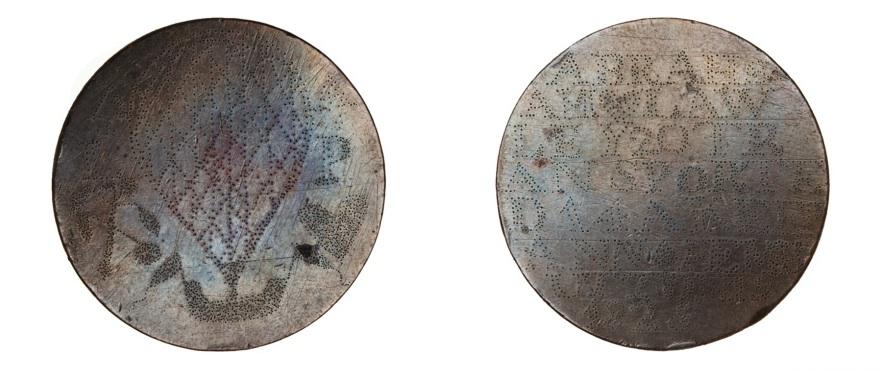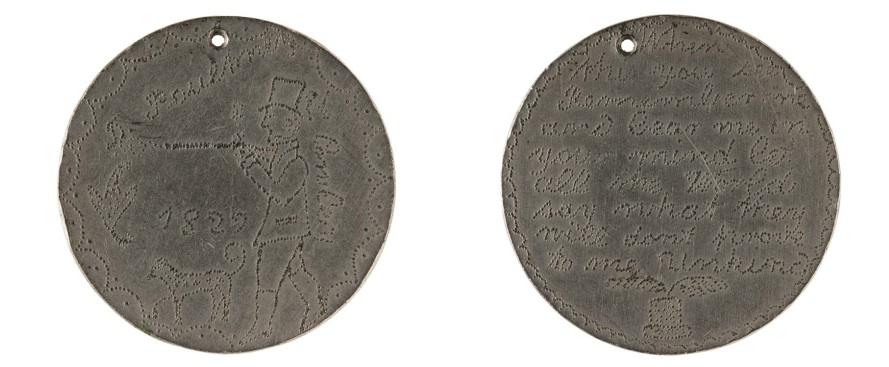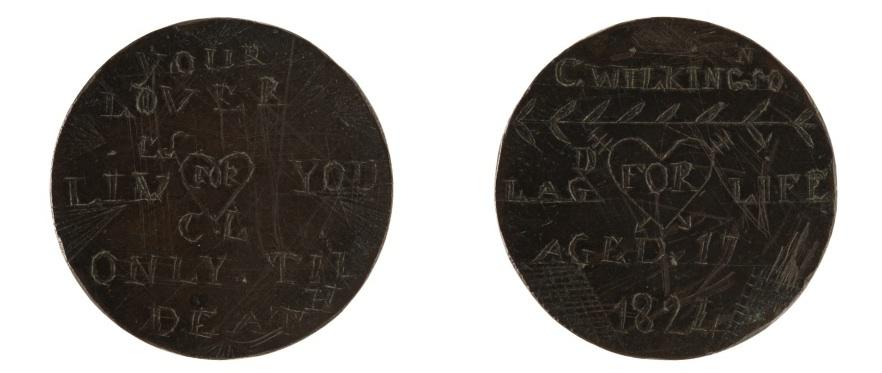The Vault is Slate’s history blog. Like us on Facebook, follow us on Twitter @slatevault, and find us on Tumblr. Find out more about what this space is all about here.
The National Museum of Australia has a great online exhibit showcasing its collection of convict love tokens. These mementoes—coins that had been smoothed over and then engraved with messages, memories, and dates—were tangible souvenirs that transportees gave to sweethearts, families, and friends before leaving for penal colonies in Australia. Some personally crafted their tokens, while others paid artisans to do it for them.
Between 1787 and 1868, some 150,000 convicts sailed to Australia. (This new scheme superseded the old practice of shipping convicts to North America—no longer possible after the revolution.) “Transportation” often meant permanent separation from family, friends, and sweethearts, since many convicts never returned from Australia even after their sentences expired. These sincere, emotional tokens seem like slim compensation.
Here are a few of the mementoes, with some of the results of the research that the museum and collectors have done into the backgrounds of the convicts whose names appear. The full collection contains 314 tokens, 80 of which researchers have associated with a person in the historical record.

National Museum of Australia.
Abraham Lawley, the apparent creator of this token, was transported in 1828 after being convicted of stealing a handkerchief. While this level of punishment for larceny seems harsh, in the early 19th-century U.K. it represented a reform, as stealing almost anything had previously been a capital crime. Historian Simon Devereaux writes that deterrence was the dominant objective of such punishments—authorities hoped to set an example for others who might be inclined to steal from property owners.
The 20-year-old Lawley stayed in New South Wales, even after his sentence was up. We don’t know who Ann Pembutton was, or what significance a balloon with a gondola might have had for the couple.

National Museum of Australia.
In the 18th and 19th centuries, as English land that had been held in common was increasingly enclosed and assigned to noble ownership, hunters came into conflict with landowners. The National Museum believes that the “D. Poultney” on this token was David Poultney, a 20-year-old poacher who, with compatriots, wounded a gamekeeper in 1829. Poultney was transported to Tasmania, where he was pardoned in 1836, married, and remained in the capital of Hobart, eventually raising ten children.

National Museum of Australia.
The National Museum traces this token to Charles Wilkinson, 17, who (like Lawley) stole a handkerchief. Wilkinson was transported to Tasmania for life in 1824. He was convicted again for stealing in 1829, and finally pardoned in 1844.